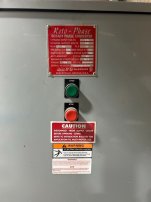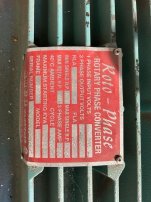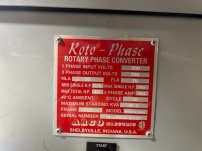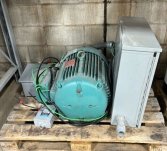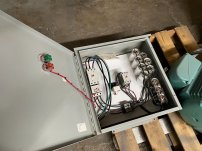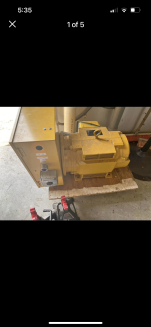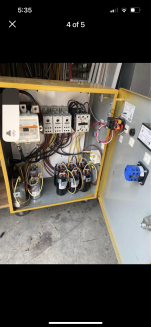The second one leaves you guessing a bit, since the plate you show is the idler motor data plate. That leaves you to figure out what it ought to start and run when used as an RPC.
The ARCO gives you specifically what HP they expect it to be able to start, and what the total connected load HP should be, maximum, as an RPC. That is the data you need, assuming it is correct.
If that data is correct, it should be able to run both, since you would have 30HP connected, and they allow 40.
Compressors can be hard to start. But that ought to start the compressor with no issues by itself (and the compressor should have an unloader). If the lathe (20 HP) is running, and is not under max load, it will add some "effective idler capacity" to the system, and again per the numbers, there should be no issues. Plus, the remaining stated capacity is double the compressor power (40 HP total, less 20 HP for the lathe).
I use an ARCO unit. Mine is larger capacity than the biggest single load, and I never have two 3 phase machines running at once. So I have never come particularly close to maxing it out, and cannot speak to that from experience. It has been bulletproof and reliable so far, and I got it used from another shop.
My inclination would be to go with the ARCO, given the data available. They state an actual RPC output capacity that should do what you need.
As for what the ARCO "should have been" per your call to them, I have no clue. It sounds as if there may have been some mis-communication.
But, unless there are obvious connections unused that would go to these mysterious multiple units, I'd be dubious. I don't see any such connections, and the contactors etc are all wired up as if what you see is what you get.
The control box is about what I would expect for a motor like that, certainly not more capacitors than the motor would need.* The motor and control box both carry the same rating tag, there is no mention of anything like "when used with auxiliary unit Model XXX", and the motor physical size is credible for the rating.
I have heard one or two people say that ARCO rates things optimistically, but I have no input to that, since I don't strain the limits of mine. Per your information, and the dataplate, you have a 30% cushion over the total connected HP you plan to use, as well as for your least advantageous starting situation.
* ARCO has used a "dual cage" motor design, that draws less start current, and needs less start capacitance, than typical general purpose motors. So the relatively few capacitors visible makes sense. RPC control boxes for general purpose motors usually have more.


